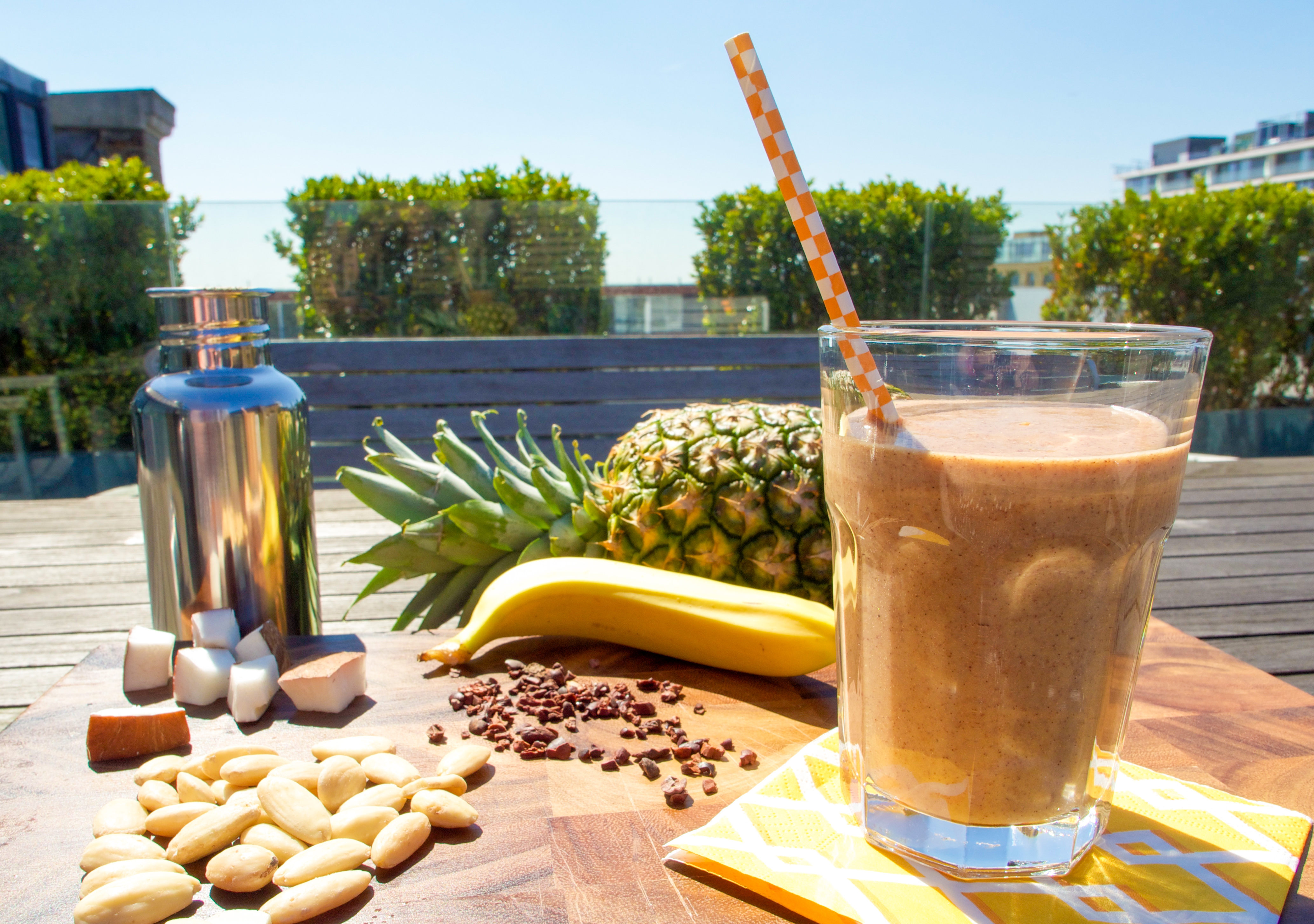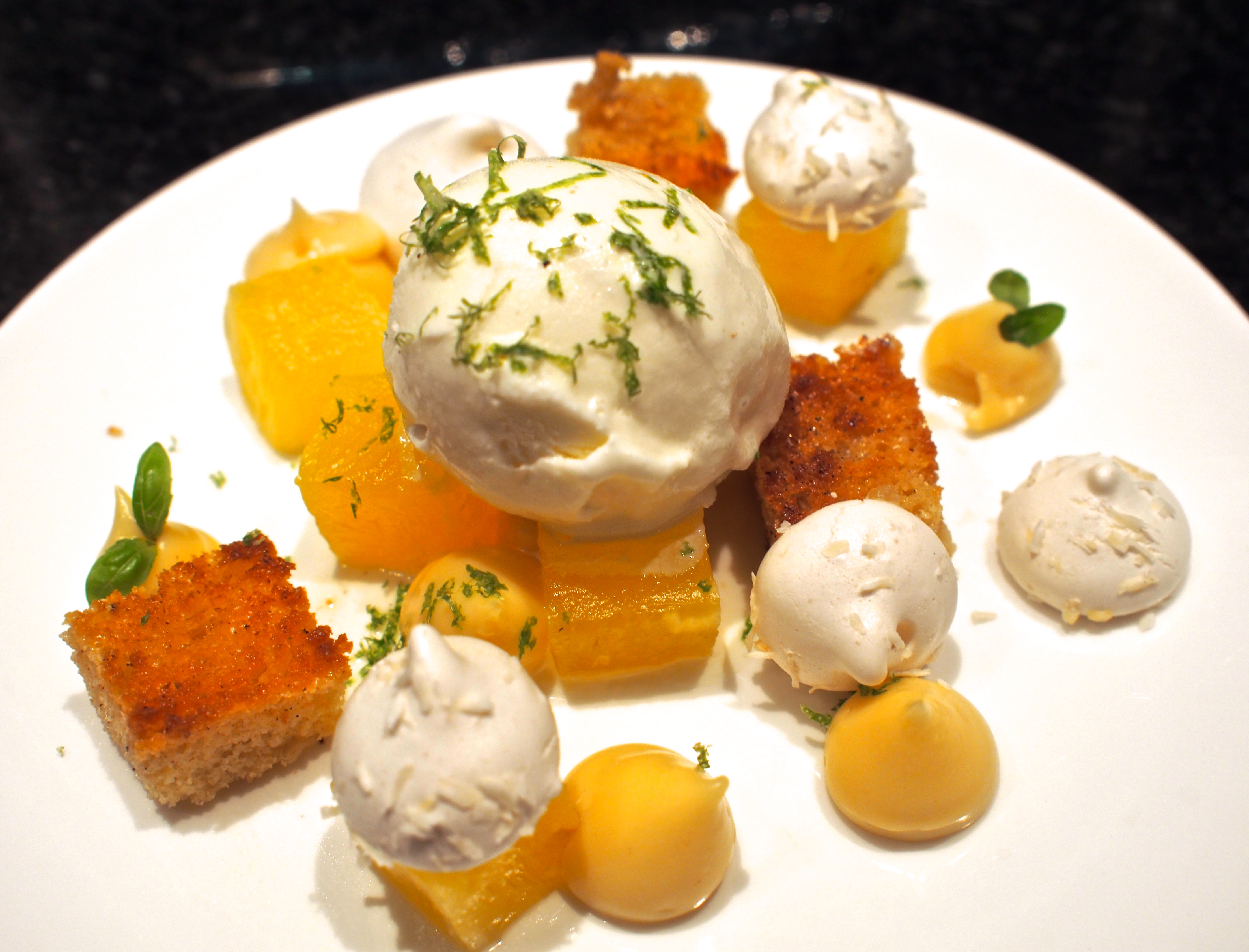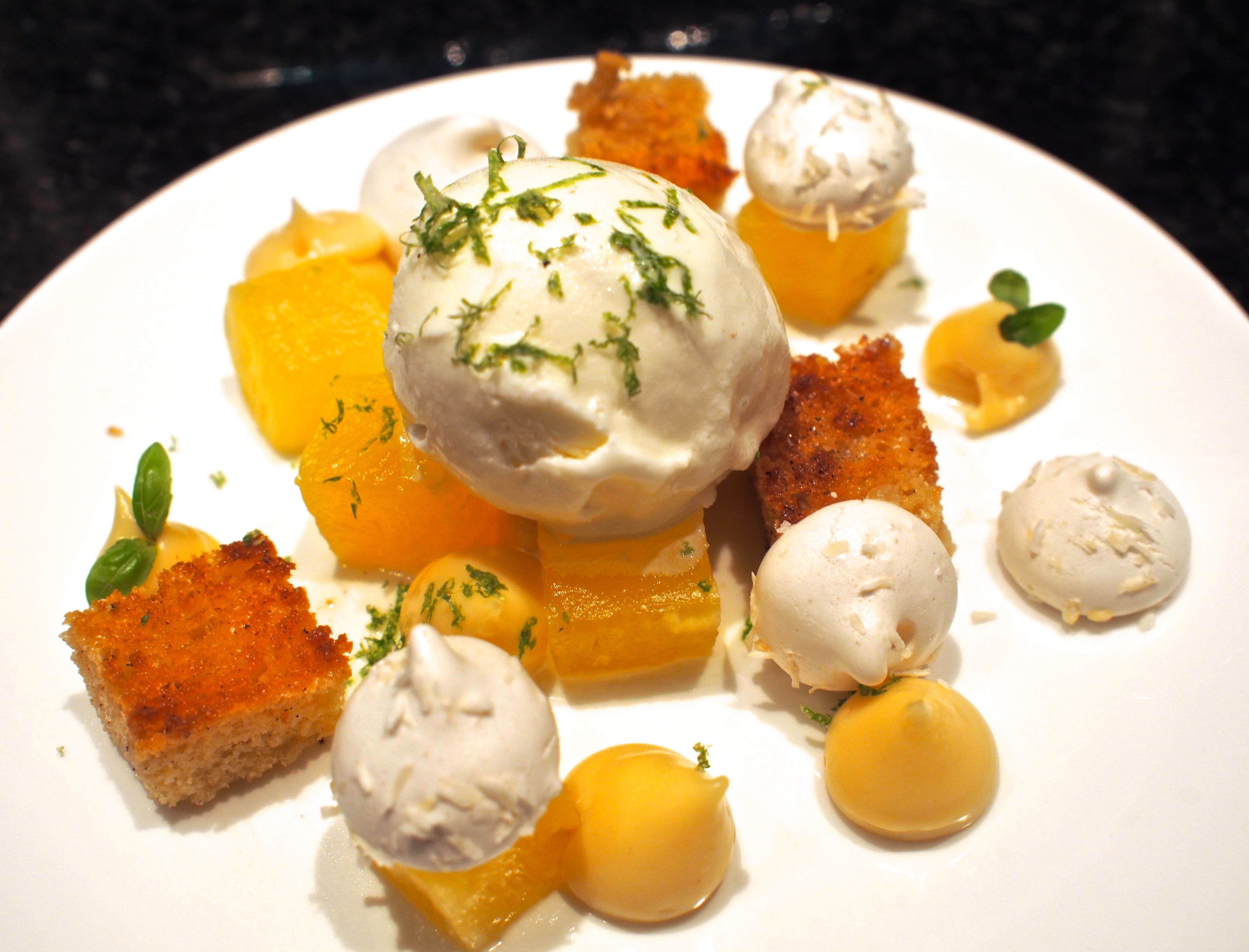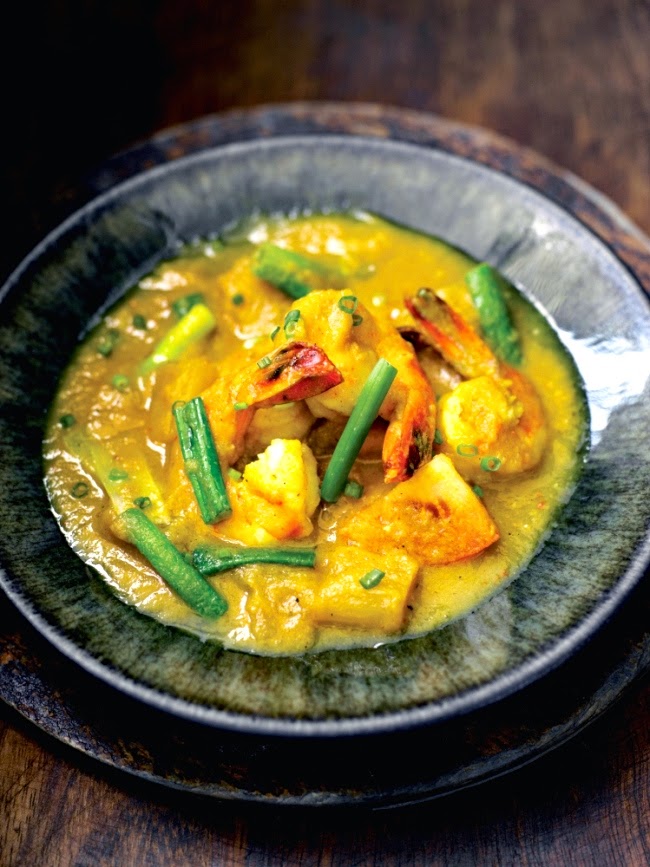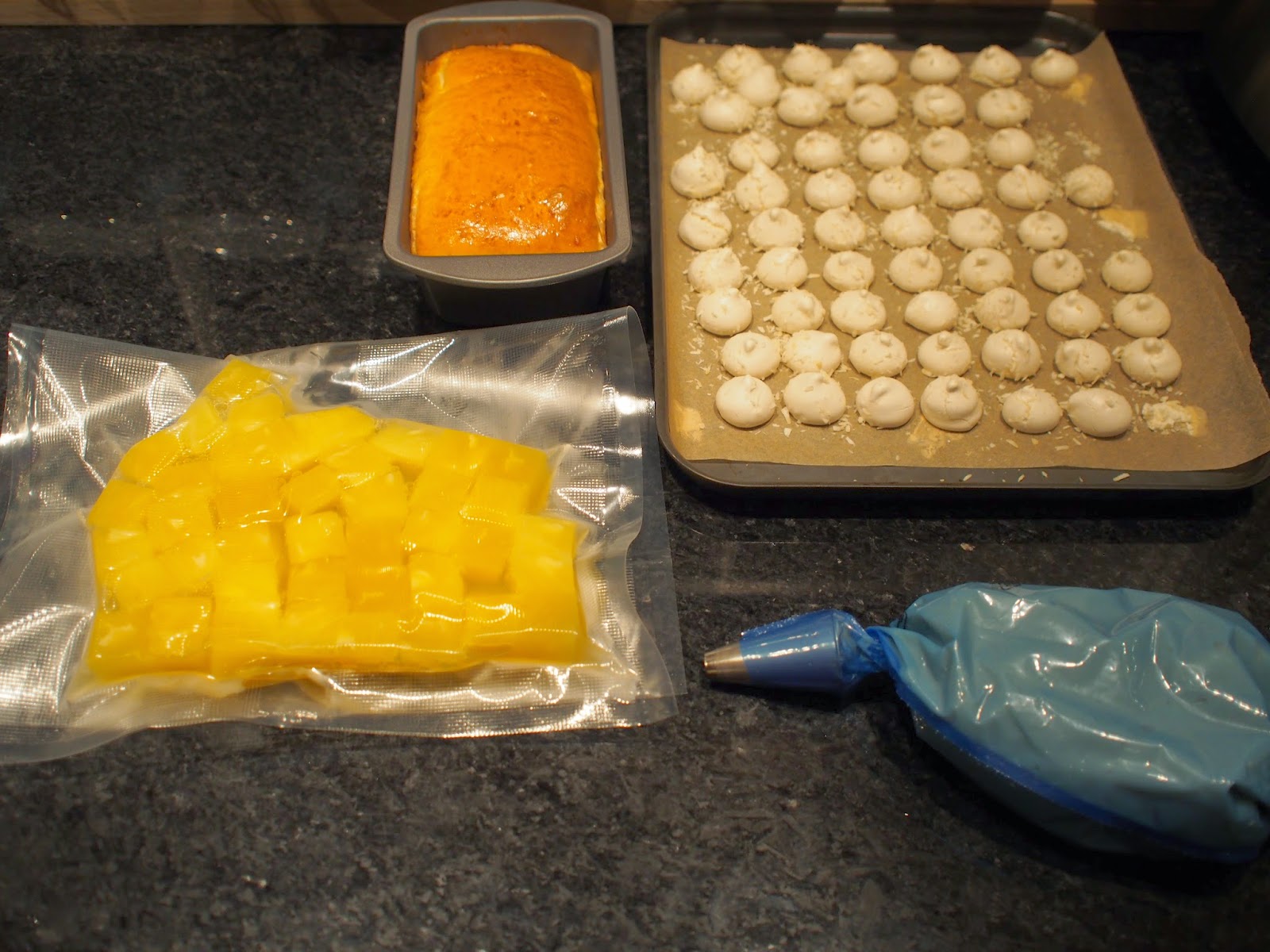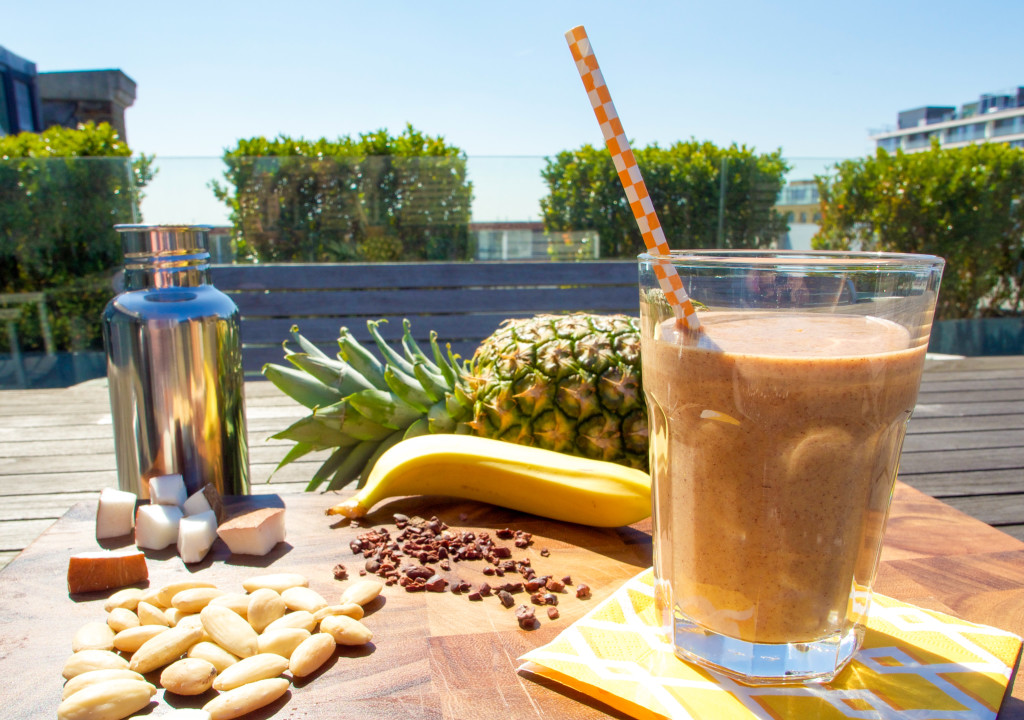
Smoothies can be a quick way of consuming wasted calories, or with a little planning and foresight, can add valuable minerals and vitamin to your diet – forget throwing in a banana and some milk, and concentrate on building a smoothie recipe which offers you more… Once you familiarise yourself with the nutritional properties of some of the ingredients, you can tailor something to suit your own specific needs, as I have done here.
The quantities given will make 2 large smoothies – have one for lunch, and save the other for an evening snack, when you feel the chocolate munchies coming on. Not only will the cacao nibs kill the craving, but they’ll give you a better sense of well-being than chocolate, in my opinion…
Cacao and Coconut Smoothie
50ml almond milk
330ml coconut water
40g coconut flesh
2 bananas
1 Tbsp organic cacoa nibs
1/2 mango
1 passion fruit
50g pineapple
big handful of ice
{handful of mint, for an mint-choc hit ;0)}
Blend all the ingredients together, until the texture is to your liking. The cacao nibs will add fibre, but if you find the texture unpleasant, you could always use ground cacao. Personally I think it adds to the fullness of the smoothie.
Nutritional information:
Almond milk is made from whole, blanched {or sometimes unblanched} almonds which have been soaked in water overnight. Whizzed with the fresh mineral water the following day, you drain them through muslin 0r nut bag, and use the resulting liquid in place of dairy milk. The flavour is actually rather refreshing, though not good for cappuccino’s etc. Nut milks are much higher in protein than cow’s milk, with a lower saturated fat content, and higher level of healthy fats. Unsweetened almond milk has a low glycemic index, so won’t cause your blood sugar levels to spike – a key consideration when looking for smoothie ingredients, which are so often fruit based. Being non-dairy, it doesn’t require refrigeration either, which makes it great to take out with you for the day! What else? There’s no lactose or casein, so it’s eminently suitable for those on a dairy-free, lactose-free, or casein-free diet. It’s also vegan and vegetarian friendly, so can be enjoyed by everyone apart from our poor nut-allergic chums! To sweeten almond milk, soak a couple of dates in water for an hour, and blend into the filtered milk.
Coconut water can be a bit of an acquired taste on its own, but add it to juices and smoothies, and it brings a whole heap of benefits to the party. Containing sugars, minerals, vitamins, cytokinins {which are anti-carcinogenic}, amino acids, cytokine {anti-ageing and PH regulation}, electrolytes {including potassium and sodium, both of which aid rehydration, and give coconut water a similar electrolyte balance to blood}, bioactive-enzymes {which aid digestion}, and phyto-hormones {which are currently touted to be anti-ageing, antioxidant, and again anti-carcinogenic}.
Bananas contain potassium, vitamin B6, magnesium and vitamin C. Potassium is particularly useful for improving heart health, and lowering blood pressure. They also contain tryptophan, which can improve your mood and help your memory. Not just for the kids and the gym freaks after all!
Mango contains an antioxidant called zeaxanthin, which helps filter out blue-light rays, and decreases the risk of age-related macular-degeneration. The beta-carotene found in its rich orange flesh has been shown to have an adverse affect on colon and prostate cancer. Again rich in potassium, but also in fibre and Vitamin A, this makes mango a must-eat fruit in my family {my family are predisposed to macular-degeneration, and my father has just finished prostate cancer treatment!} Eat those mangoes people!
Passion fruit contains dietary fibre, high levels of vitamin C, but also vitamin A, beta-carotene, and our good friend potassium.
Pineapple is the only known source of Bromelain, which is thought to improve joint mobility, decrease joint inflammation, alleviate joint pain, and inhibit tumour growth. Again it contains vitamin C, betacarotene, and potassium, making this smoothie a real power-house.
Cacao nibs contain flavonoids, similar to those found in tea, grapes and berries. Whilst research into flavonoids is ongoing, particularly around the quantities which need to be consumed, they are reputed to lower cholesterol, and act as an anti-inflammatory. They also contain polyphenols, which again help with cardiovascular health, and are thought to inhibit strokes and cardiovascular disease {both through improving platelet ‘clogging’ and strengthening artery walls}.
Alternatives: You could swap out the banana for an avocado – it would increase the fat content significantly, but would create a smoother mouth-feel, which would work well with the flavour of the cacao. You could also add coffee beans and/or a shot of coffee, as a perfect breakfast pick-me-up – it’s yummy!

